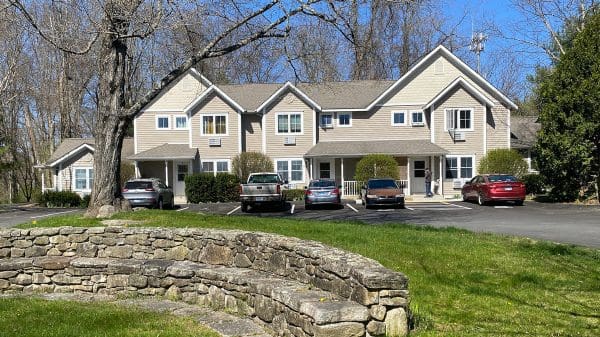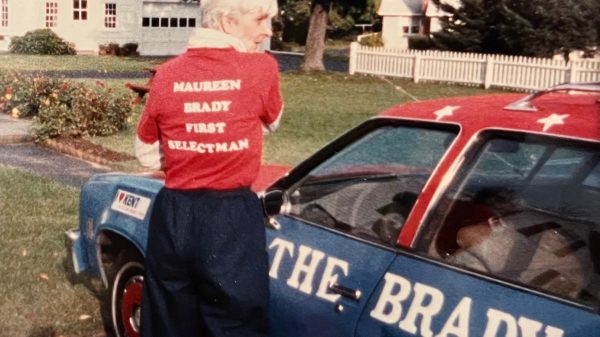KENT—The Conservation Commission recently had a feisty discussion about planting street trees in the village center and whether the trees would be installed on private property without cost to the owners.
Under debate was a plan devised by commission member Jos Spelbos and Tree Warden Bruce Bennett to plant three trees on the properties of Nordic Property Management on Bridge Street. The cost to purchase and plant the trees is estimated at $1,400 to $1,500 per tree, paid from the Kuga Fund, which currently has a balance of $10,647.
The tree prices are wholesale and town crew foreman Rick Osborne has offered to use town equipment to install them. According to Bennett, Nordic Property Management has given permission for the trees to be planted on its property but has not committed to maintaining them.
Spelbos confirmed that the plantings would be on private property and not in the state’s right-of-way. Commission members tried to recall whether plantings undertaken earlier in the millennium had required a financial contribution on the part of the landowner and a commitment to water and maintain the trees. At least one property owner paid about half the cost of the tree on her land.
Spelbos said permission is needed from any property owner to put a tree on their land. “It has to be at least five feet from the sidewalk, so it’s the best place, but you have to have their cooperation” he said.
“So, the cooperation is they agree to have $1,500 of benefit planted on their property that they have no responsibility for?” Chairman Connie Manes asked.
“It’s something the town wants to do to make the streets look nicer,” Spelbos replied. He and Bennett had offered to water the trees if they were installed this fall.
Facing opposition from Manes and member Melissa Cherniske, who said she had had an “uncomfortable conversation” with a resident about providing trees gratis to landowners, Spelbos said, “In the future we can change the plan and set up to solicit people in the village to sign up and give them a choice of tree species.”
“We can’t do it one way now and another way in the future,” Manes expostulated. She cited the woman who had paid in the past. “Now we are going to give away three trees at $1,500 and then go back to charging in the future?”
“I can’t in good faith have that happen,” agreed Cherniske.
Spelbos protested that several trees donated by Kent Greenhouse had been planted free of charge along Main Street.
Member Wendy Murphy said future landowners should have to prove they are good candidates for maintaining the trees. “They should know this is what it will cost you and this is what you have to do.”
Manes agreed. “It feels like private property owners should have some skin in the game to care for them. We can see the old contract asked people to water them. It was a negotiation—we’re planting a tree on your property and need your commitment. The fact that Bruce did not want to ask for a commitment—it’s too flaky, and I don’t want to be involved in that as a commission of the town.
“If we’re spending down the Kuga fund, then we ought to do it the right way,” she continued. “We should make our intentions clear. Bruce’s idea that the town should pay for landscaping for businessowners is a pretty dangerous slope to go down. We can’t just be careless with public money.”
The Kuga Fund originated because of 19th-century Kent native Birdsey Northrop’s mission to plant trees in Japan. Japanese forester Shunichi Kuga visited Kent in 1972, bringing copies of his biography of Northrop and a check for $1,000. The gift, Kuga explained, was in appreciation of what Northrop had done for Japan so long ago.
In the 1980s the fund was tapped once for tree planting along Main Street. Then in 2001 the Conservation Commission took over the account for tree maintenance in the village. Eight shade trees were planted along Elizabeth Street.
Manes said public monies cannot disproportionately benefit one landowner, to which Spelbos replied, “We decided this was such a big gap, that it is where [the trees are] needed.”
Member Carol Franken noted that all three of the current trees would go to one property owner and would be a significant financial investment. She asked what percentage of the cost other towns ask from landowners for street trees. “Fifty percent sounds high to me,” she said. “The issue here is that the property owner has three separate lots, so the onus is on one person.”
Spelbos noted that some towns install trees under their public works budget and do not have separate tree-planting programs. These trees are installed without cost to the landowners.
Unable to come to an agreement—a motion to plant the trees this fall failed to carry—the commission will use the winter to determine a policy for the future.
Manes concluded, “I think we can do something that makes sense and will not be disappointing to people who think it’s not fair. We will have a plan for the town’s street trees so it won’t be a question of whether one is needed on a person’s property or not.”






























